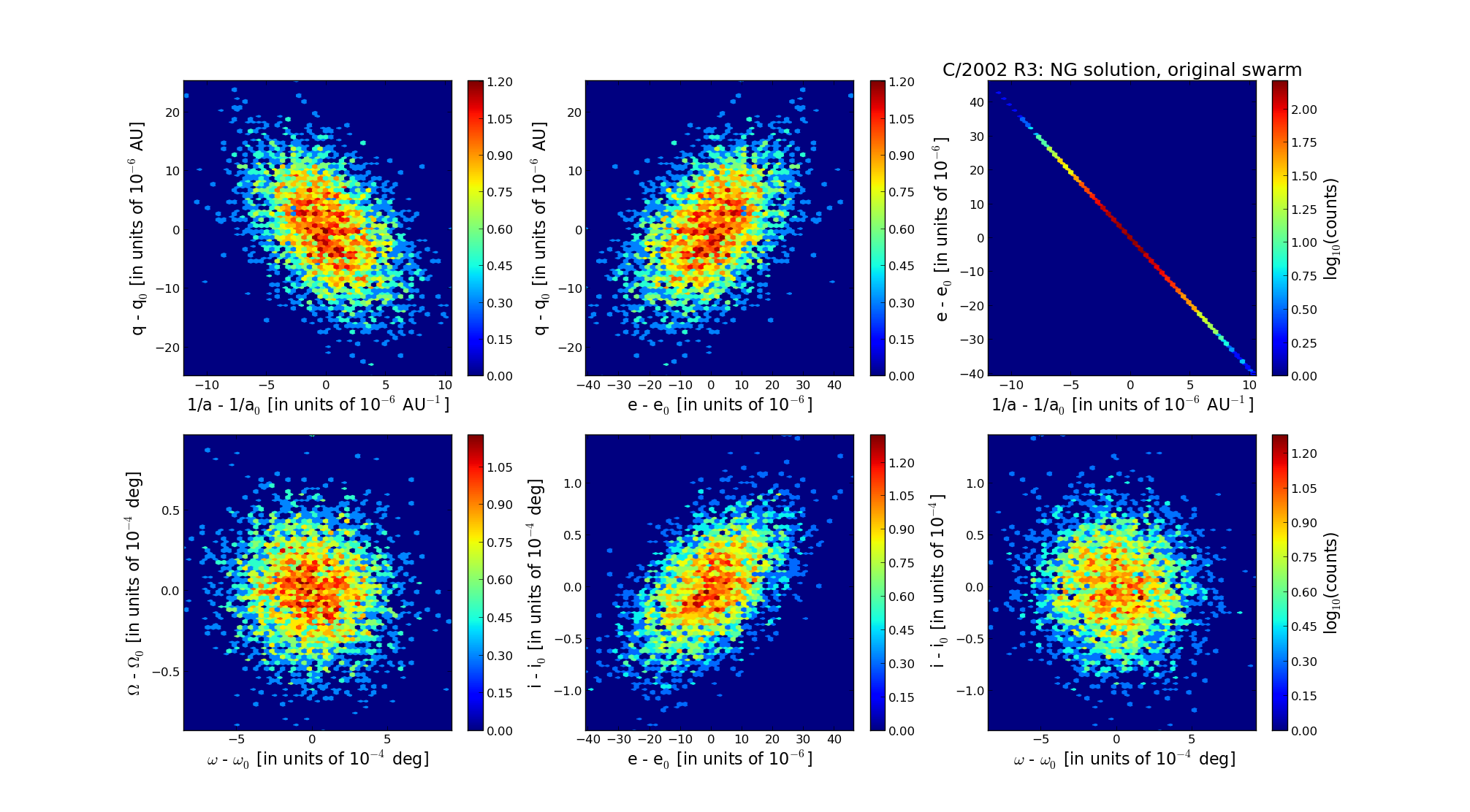| Solar System Dynamics & Planetology Group |
 |
C/2002 R3 LONEOS |  |
| Solar System Dynamics & Planetology Group |
 |
C/2002 R3 LONEOS |  |
| number of observations | 1274 |
| number of residuals | 2530 |
| data interval | 2002 Sep. 4 — 2004 May 24 |
| rms [arcsec] | 0.52 |
| orbit quality class | 1a |
| Epoch (TT) | 20030610.0 | = JD 2452800.5 |
| time of perihelion passage (TT) | 20030613.470930 | ± 0.001417 |
| perihelion distance | 3.86946979 | ± 0.00000421 |
| eccentricity | 1.00267793 | ± 0.00000700 |
| argument of perihelion [deg] | 45.067172 | ± 0.000275 |
| longitude of the ascending node [deg] | 54.296421 | ± 0.000057 |
| inclination [deg] | 161.095581 | ± 0.000012 |
| inverse semimajor axis [10-6 au-1] | -692.07 | ± 1.81 |
| Nongravitational parameters [10-8 au/day2] | A1 = 17852 ± 2637 | A2 = 5815 ± 3514 | A3 = 272 ± 621 |

| Epoch (TT) | 16991001 | |
| time of perihelion passage (TT) | 20030613.160670 | ± 0.001468 |
| perihelion distance | 3.87017657 | ± 0.00000698 |
| eccentricity | 0.99981363 | ± 0.00001189 |
| argument of perihelion [deg] | 44.821560 | ± 0.000251 |
| longitude of the ascending node [deg] | 54.088264 | ± 0.000025 |
| inclination [deg] | 161.179102 | ± 0.000037 |
| inverse semimajor axis [10-6 au-1] | 48.16 | ± 3.07 |
| Epoch (TT) | 23060910 | |
| time of perihelion passage (TT) | 20030612.238091 | ± 0.002420 |
| perihelion distance | 3.87294504 | ± 0.00000705 |
| eccentricity | 0.99998505 | ± 0.00002452 |
| argument of perihelion [deg] | 44.982189 | ± 0.000475 |
| longitude of the ascending node [deg] | 54.297596 | ± 0.000181 |
| inclination [deg] | 161.114685 | ± 0.000029 |
| inverse semimajor axis [10-6 au-1] | 3.86 | ± 6.33 |